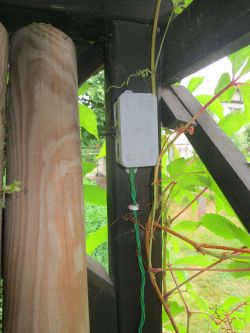kotbury wrote:Thank you for the information. I am a newbie in the subject. I will shortly send a connection diagram of three fields to a mower that does not have it in the program (it returns to the base from each field) for now I have it in my head I have to draw itAs for the signal - for me, the NAC quinola base transmits with a frequency of 7.78 kHz (which is even less than long), amplitude 270 mV, more or less rectangular shape.
Cables that are close to each other but in opposite directions cancel each other out (something like a bifilar coil). Please provide a picture of the wiring layout.
And as for the fields - it's strange that there are none. My chino MA! and "until" 4 fields. But not with any GPS, I just demarcate them with very narrow passages, and he just "programs" which he is supposed to enter - he remembers the time of driving along the perimeter cable and "detaches" from it after that time - simple as a balloon.
And at first I was wondering - how does it know which way to go to the base - it turned out that after the battery runs out, it starts spinning in circles a few times (supposedly to fill the base, but it comes out terribly badly), then it goes straight ahead and when it encounters a wire, it ALWAYS turns right and follows it to the base.
The base, of course, must be set with the entrance to the left, of course there is no information about this in the instructions and of course I set it the other way around.
Bangla OK now. One note - if the charging starts to go crazy (i.e. 10 minutes of driving, half a day of charging) it's not the fault of the dead batteries but the poor connectors of the cables from the battery to the motherboard - they get hot - I had to correct it in my and two other NACs of my friends. All Chinese - there is a 60-amp XT60 in the battery, a plug on the board with pins as thick as a pin.
Added after 30 [minutes]:
Thank you for your knowledge. I bought a cheap Mac Alister 500m2 mower, the bigger one in Castorama. I am a novice in the subject of robot mowers, a diagram of how to divide a complicated lawn into two or three fields for a simple mower without a brain Mac Alister without a field division program, I will draw a diagram in my head and send it (the mower returns to the base by itself from each field) The mower charges over an hour and he works 1.5 hours to return to the base.
Added after 15 [minutes]:
Someone asked what the word stupid means I bought a connector in a store once it connected once it didn't block and gave me money back I bought it a second time on Alle it was too expensive and it got blocked I returned it they are supposed to return the money, apparently the whole series is falling apart I bought two more connectors on They all work hard





